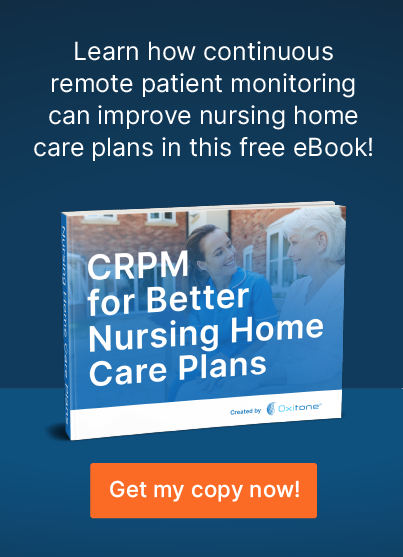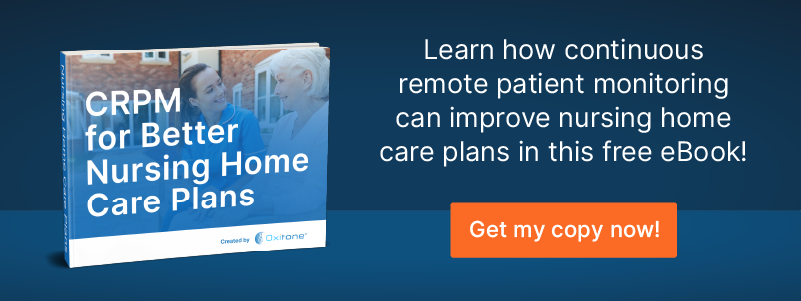Telemedicine is currently one of the biggest trends in healthcare, but this advancement has been improving patients’ quality of life for years. Also referred to as telehealth, telemedicine involves the use of digital technology to provide health services virtually. While many people are now utilizing these tools to engage in visits with their clinicians during the pandemic, this is just one form of telemedicine. There are many ways that technology enhances the effectiveness of the treatment experience while offering significant convenience.
One of these ways is continuous remote patient monitoring (CRPM), which offers streamlined features such as predictive alerts and the real-time recording of health data. This allows for seamless, automated follow-ups that offer uninterrupted care without the need for face-to-face interaction. The benefits of CRPM are far greater than those of RPM, or traditional remote patient monitoring. RPM entails more expensive manual follow-ups, a lack of continuity among recorded data, and outdated threshold alerts. The highlights of CRPM set it apart from other telemedicine, making it the more efficient tool for health management.
The use of a continuous patient monitoring system within hospitals has been especially impactful. Due to the portable, ongoing nature of such devices, CRPM allows hospitalized patients to remain mobile throughout their care and helps with the early detection and prevention of medical complications. Continuous remote patient monitoring has been shown to decrease patient falls and the occurrence of pressure ulcers, while lowering the number of days spent in intensive care and medical-surgical units. The use of CRPM has also prevented code-blue events, or medical emergencies, and deaths within hospitals. One study predicts that CRPM adoption in all United States hospitals could save an estimated $15 billion each year.
The positive outcomes correlated with CRPM also extend to people living within the community. Individuals with cardiopulmonary diseases, obstructive sleep apnea, and physiological stress can use a patient monitoring system to closely track conditions and stop the development of other health issues. By keeping these concerns under control, individuals can prevent stroke, depression, diabetes, high blood pressure, insomnia disorder, chronic fatigue, burnout, and other complications.
To fully understand CRPM, it is important to know the main features that set this tool apart from other remote technologies. This will allow doctors and other healthcare providers to weigh the possibility of upgrading to CPRM from a more traditional patient monitoring system. CRPM has detailed data recordings that clinicians need in order to closely monitor high-risk patients. These individuals are typically too fragile to benefit from traditional remote monitoring, and they require a more sophisticated piece of equipment to suit their medically-complex needs. Remote monitoring, on the other hand, is more appropriate for patients who wish to record parameters, such as vital signs, for the purpose of general health maintenance.
Both CRPM and remote monitoring tools can be used to track vital signs such as blood pressure, pulse rate, anesthesia levels, electrocardiographs, temperature, continuous infusion levels, hemoglobin, and more. Despite this similarity, high-risk patients have far better outcomes when using CRPM devices. This is undoubtedly due to the comprehensive nature of continuous monitoring, which gives providers much more information to aid in the treatment process of medically-fragile individuals.
In order to successfully integrate CRPM within medical settings, there must be a good understanding of the features associated with these devices among the members of a standard treatment team, including doctors, physician assistants, registered nurses, licensed practical nurses, certified nursing assistants, respiratory therapists, physical therapists, occupational therapists, speech therapists, and other allied health professionals. Based on the discipline of the provider, parameters recorded by a patient monitoring system can be used to modify treatment plans, make more targeted recommendations, facilitate increased physical activity, change medications, predict prognosis, and generally improve health indicators across the board.
Again, the advantages of CRPM within the treatment process extend far beyond hospital settings and can be used to specifically tailor aftercare or discharge instructions and improve patient performance within the community. Clinicians may use CRPM data to inform their recommendations of in-home CRPM devices, assistive technology, or adaptive equipment; craft person-centered diet and exercise plans; and teach patients how to advocate for themselves by understanding what CRPM parameters mean for their health. To promote effective interprofessional collaboration, providers who do not directly use CRPM devices should still be aware of how they work in case they need to relay data to the appropriate care professionals.
Ideally, CRPMs should be integrated with SaaS, or programming that works intuitively with other health technologies to make data readily available to patients and providers alike. This not only encourages improved patient outcomes, but it also promotes ease-of-use for providers. CRPM data should be integrated within secure physician web portals and be available on demand with online features such as dashboards, reports, and data analytics that can be added to medical documentation.
Remote monitoring systems can create a snapshot of basic parameters, but CRPM tracks additional information to continually provide a closer look into a patient’s health status. Specs include respiratory rate, skin temperature, motion or activity analysis, sleep patterns, pulse rate, heart rate variability, fall detection, and blood oxygen (SpO2). CRPM has detailed analytics that compares all results with a patient’s baseline statistics to provide reports, graphs, and charts that clearly indicate areas of concern. This is highly useful for providers who use CRPM alongside other treatments to effectively care for high-risk patients.
CRPM has been demonstrated to significantly improve any clinician’s standard of care, while enhancing outcomes and the patient experience for high-risk individuals. Continuous remote monitoring has predictive alerts, real-time recording of health data, and automated follow-ups. Such benefits create a seamless flow throughout the continuum of care and offer more detailed parameters than traditional remote monitoring tools.
One of the most reliable and innovative CRPMs is Oxitone,a full-suite, FDA-cleared health solution for the high-risk or medically-fragile patient. It reduces cost utilization, offers continuous and accurate health information, improves patient safety, and prevents hospitalization or complications from chronic conditions. Compared to other CRPs, Oxitone has above-average analytics, reports, and statistical data that can easily be integrated within any health system’s existing physician web portal. For the peace of mind and safety of your most complex patients, Oxitone offers the highest quality CRPM technology.
Here at Oxitone, we boost value-based healthcare by delivering extraordinary patient, clinical, and economical outcomes at reduced medical utilization and cost. Patients need a prompt response to emergencies. Physicians need an easy and timely follow-up with patients. Our mission is to transform chronic disease management and help save lives worldwide.
Let’s save lives together! To see how we help remote patient monitoring companies and physicians improve the management and care of high-risk patients, contact us today!


